
Did you know that, for three years in the previous century, South Africa had two official national anthems?
Former South African President FW De Klerk instituted them approximately a month before a uniquely peaceful regime change in May 1994, when Nelson Mandela became the country’s first black president.
The two songs were the South African national anthem of the old dispensation, Die Stem van Suid Afrika (“The Call of South Africa”), and a Xhosa Christian hymn called Nkosi Sikelel’ iAfrika (“God bless Africa”).
Later, in 1997, these were adapted into one national anthem. The name of the hymn, Nkosi Sikelel’ i Afrika, was the title of choice, which is unsurprising as the song has a rich history stretching back two centuries. Keep reading to learn more!
- ➜ But let’s start on a soulful note—listen to this beautiful contemporary rendition of the South African national anthem, as performed by the inimitable Ndlovu Youth Choir. Also, listen here why studying Afrikaans is a great idea!
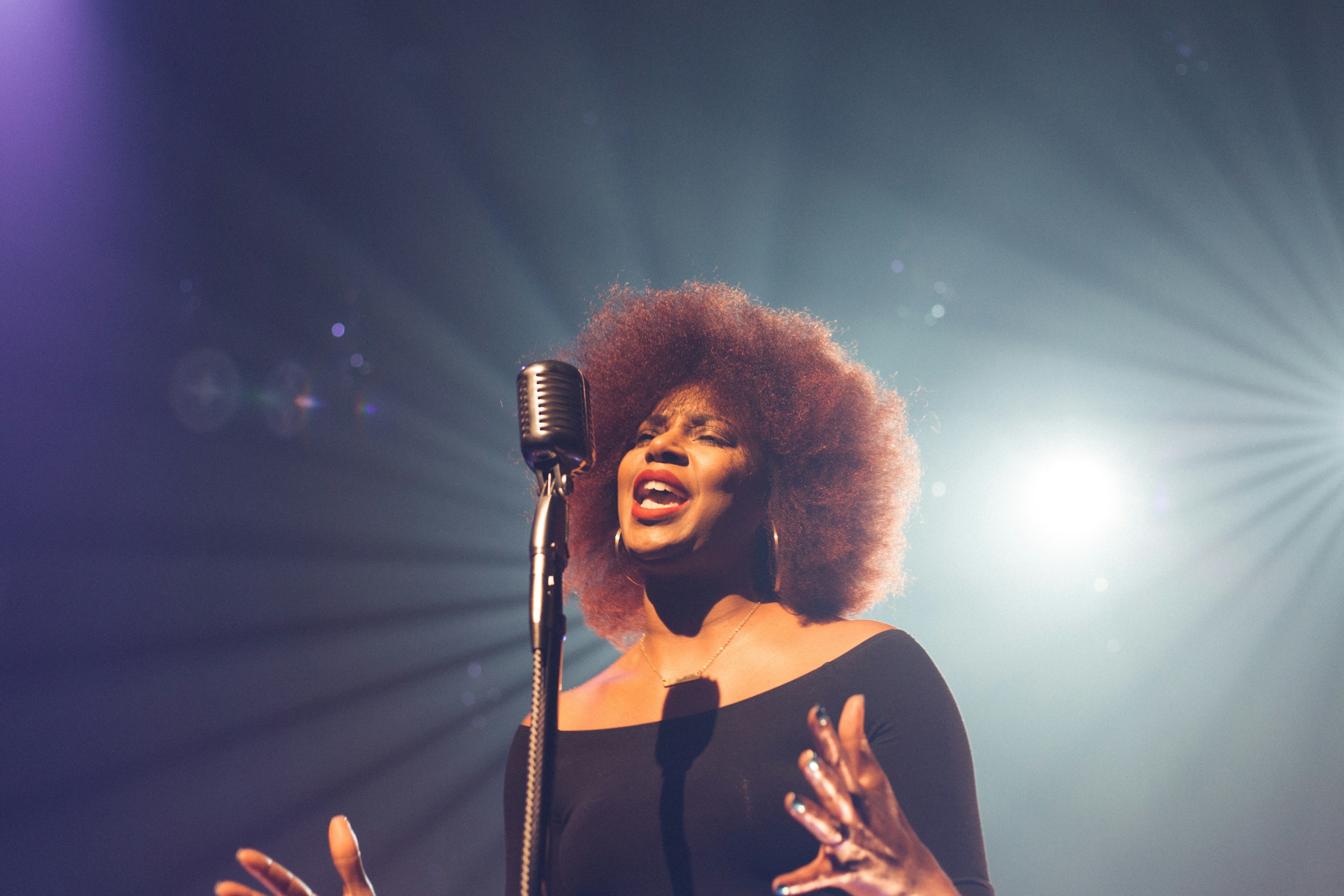
Die sing van die Suid Afrikaanse volkslied word dikwels gelei deur ‘n solo kunstenaar tydens seremonies. / “Singing of the South African anthem is often lead by a solo artist during ceremonies.”
 Table of Contents
Table of Contents
- South African National Anthem Lyrics and Melody
- History of South Africa’s National Anthem
- Purpose of Anthems and their Protocols
- Where/When is the South African Anthem Typically Sung?
- BONUS: National Anthem Vocabulary and Phrases
- AfrikaansPod101 Can Help You Learn the South African National Anthem
1. South African National Anthem Lyrics and Melody
The lyrics of the South African national anthem were taken from five of the country’s official languages, of which there are eleven. These five are the most widely spoken in the country:
- Xhosa
- Zulu
- Sesotho
- Afrikaans
- English
| Nkosi Sikelel’ iAfrika The South African National Anthem | |
| Original | Translated to English |
(Xhosa) Nkosi sikelel’ iAfrika Maluphakanyisw’ uphondo lwayo, (Zulu) Yizwa imithandazo yethu, Nkosi sikelela, thina lusapho Iwayo. (Sesotho) Morena, boloka setjhaba sa heso. O fedise dintwa le matshwenyeho, o se boloke, o se boloke. Setjhaba sa heso, setjhaba sa South Afrika, South Afrika. (Afrikaans) Uit die blou van onse hemel, Uit die diepte van ons see, Oor ons ewige gebergtes, Waar die kranse antwoord gee. (English) Sounds the call to come together, And united we shall stand, Let us live and strive for freedom, In South Africa, our land. | Lord, bless Africa. Let it/us be exalted/raised up. Hear our prayer. Lord, bless us, your family/children. Lord, save my community/people. End wars and suffering—don’t keep it, don’t keep it. My community/people, the people of South Africa, South Africa. From the blue of our heavens, From the depths of our seas, Over everlasting/eternal mountains, Where the crags/cliffs resound. |
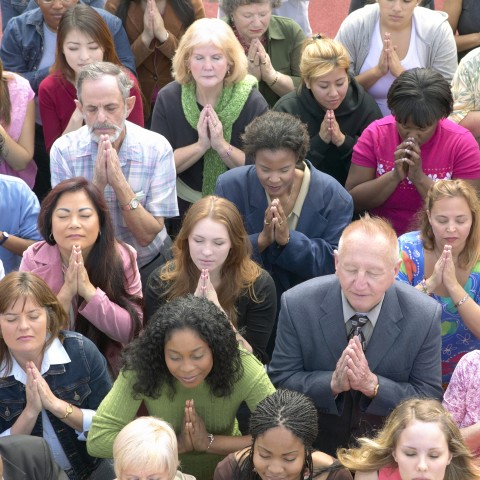
Die Suid Afrikaanse volkslied is ‘n getoonsette gebed. / “The South African anthem is a prayer set to music.”
- ➜ If you’re curious about what South Africa is like as a travel destination, this article is a must-read!
Here’s also the anthem’s sheet music.
Nkosi Sikelel’ iAfrika has a couple of unique attributes:
- Each stanza is in a different language, except the first, which is in two languages.
- It’s the world’s only neo-modal anthem, meaning it starts off in one key and finishes in another.
- The first couple of stanzas comprise a petition to a higher power not only for the freedom, happiness, and protection of South African nationals, but also for the exultation of the whole continent of Africa and all its people.
Now let’s take a look at the history of this soulful anthem.
2. History of South Africa’s National Anthem
As previously mentioned, the South African national anthem combined two songs, each with their own history.
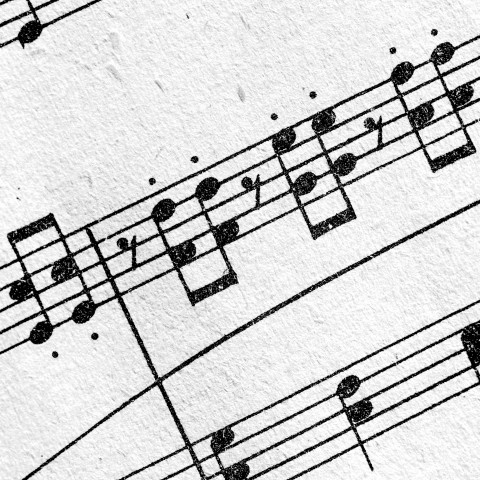
Let’s start with the song that lend the South African anthem its title and first two stanzas.
2.1 Nkosi Sikelel’ iAfrika (“God save Africa”)
As mentioned, the first two stanzas of the anthem is a prayer to a higher power for the freedom, happiness, and safety of South African nationals, and the continent of Africa. The second stanza is a more secular call, which we’ll look at that in the next section.
Most Recent Political Influence
The anthem’s religious roots are important, as world history has shown that politics and religion tend to be inseparable. History also showed that this combination is, sadly more often than not, a double-edged sword. Great atrocities have been committed in the name of religion, and Christianity, in particular, was often abused as an instrument of oppression by the corrosive apartheid (literally: “apart-ness”) government. (Apartheid is the political term used to describe deliberate and forced racial segregation, as was practiced by the previous South African regime.)
However, South Africa’s transition from authoritarian rule to a democracy on April 27, 1994, was largely peaceful. This was a remarkable feat, given the history of regime changes. Typically, great unrest, civil war, and civilian casualties mark most of these, but despite many people’s misgivings and fears, South Africa’s transition didn’t follow this path.
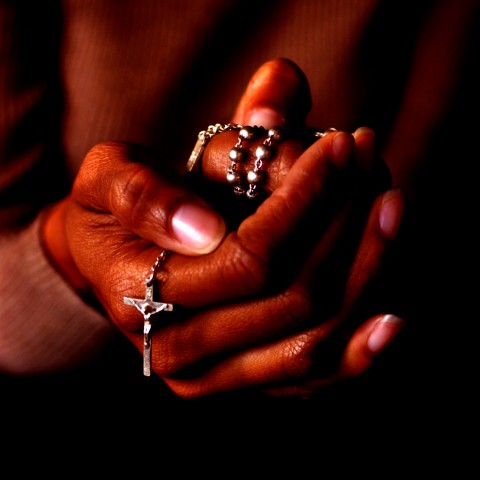
Meeste godsdienstige Suid Afrikaners glo dat die vreedsame nasionale verkiesing van 1994 gedra is deur menigte gebede. / “Most religious South Africans believe that the peaceful national elections of 1994 were carried by many prayers.”
Many historians feel that this outcome was, if not driven, then largely influenced by a few remarkable political activists and religious leaders, including the likes of Nelson Mandela, archbishop Desmond Tutu, Beyers Naudé, etc. These and other individuals notably allowed the unifying and peaceful messages at the core of all great religions to inform their actions and attitudes.
Even the country’s new constitution speaks of this benevolent approach, and to date, this constitution is touted to be the world’s most representative, inclusive, and liberal.
So, given this background, it’s not surprising that a religious hymn was included in South Africa’s new anthem. Let’s further investigate this hymn, Nkosi Sikelel’ iAfrika.
- ➜ If South African history interests you, then you will probably find South African culture and South African food interesting too!
Short History of Nkosi Sikelel’ iAfrika
Nkosi Sikelel’ iAfrika is essentially a liberation song. Here’s a timeline of its illustrious history:
- The first or original version of the hymn comprised only one verse and a chorus. It was written in 1897 by Xhosa-speaking Enoch Mankayi Sontonga, who was at the time a choirmaster and teacher at the Methodist Mission School in Nancefield, Johannesburg. It was one of many songs Sontonga wrote for his pupils, and he also composed the music.
- Later, a celebrated Xhosa writer and poet called Samuel Mqhayi wrote seven more stanzas for the hymn.
- The hymn was immediately well received. It was often sung by Sontonga’s own choir, followed by other choirs in the Johannesburg vicinity and the composer’s birth-province, Kwa-Zulu Natal.
- After Sontonga’s death in 1905, it was included in the Presbyterian Xhosa hymn book and a Xhosa poetry anthology for schools.
- It was also sung at the very first meeting in 1912 of what would later become the African National Congress, or ANC—currently South Africa’s ruling party. Over a decade later, the ANC officially adopted Nkosi Sikelel’ iAfrika as the closing song for their meetings.
- Sol Plaatje, a famous South African writer and founding member of the ANC, had it recorded in Londen in 1923.
As Anthem:
- Adaptations of the hymn are still the national anthems of Tanzania and Zambia, two other African countries.
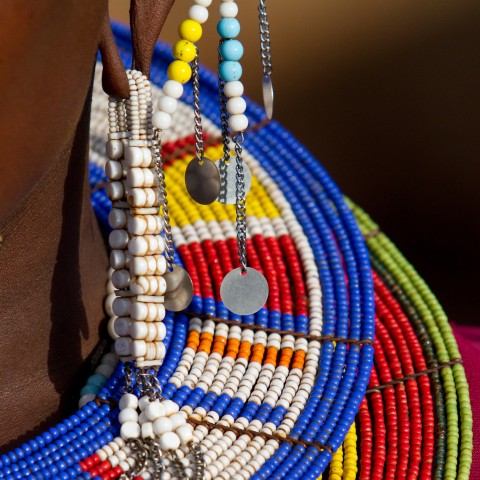
Variasies van Nkosi Sikelel’ iAfrika is ook Tanzanië en Zambië se volksliedere. / “Adaptations of Nkosi Sikelel’ iAfrika are also Tanzania and Zambia’s national anthems.”
- Its Shona version, Ishe Komborera Africa, was the first national anthem of Zimbabwe when the country gained independence from British rule in 1980. It was replaced by another anthem in 1994, but the old one remains a popular hymn to this day.
- Nkosi Sikelel’ Afrika was Namibia’s anthem for a year in 1990 after the country gained independence.
Other Facts:
- This hymn, though originally Christian, became syncretic in nature, meaning it’s now a fusion of diverse cultures and beliefs.
- In Finland, its melody is used to accompany a children’s religious song called Kuule, Isä taivaan, pyyntö tää (“Hear, Heavenly Father”).
- It featured in the highly-acclaimed movie “Cry Freedom” (1987), which told the true story of South African political activist Steve Biko’s torture and eventual death at the hands of the previous South African government.
2.2 Die Stem van Suid Afrika (“The Call of South Africa”)
Note: The literal translation of stem is “voice.” However, “The Call of South Africa” is the official English title of this old national anthem.
Die Stem, as it is colloquially called, has a somewhat more controversial, if not less inspiring, history than its counterpart. However, it is still majestic and a heartfelt call for national unity and strength in its own right, especially when we consider the story from which it was born—a story that sounds terribly similar to the one of those who suffered under apartheid.
- ➜ Despite its checkered political history, Afrikaans remains an enriching and beautiful language. Learn here why you should study it!
Historical Influences
It’s impossible to encapsulate the history of any people in only a few sentences, and remembering how the Western white Afrikaners liberated themselves from British colonial rule to came into power in South Africa is not a popular memory right now. Yet, this part of the country’s history is no less sad or horrific than any other tale of suffering under oppressive, cruel rulership of any kind.
Suffering is not exclusive or relative to anyone. Historically, white Afrikaners, or more specifically Boere (literally “Farmers”), suffered unspeakable atrocities under colonial British rule during and after the Boereoorlog (“Boer war”). Prior to that, they were deliberately oppressed and branded as inferior human beings by diverse colonial forces.
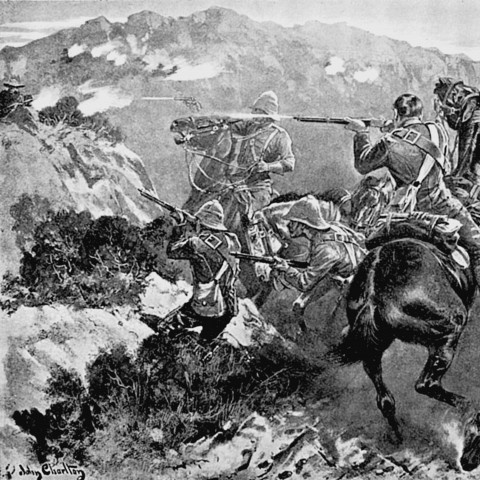
The real (but universally common) tragedy here is probably that collectively, the Boerenasie (“Boer nation”) has never dealt with its own generational pain and fear, which made the birth of an apartheid government possible. Unaddressed trauma and an un-scrutinized personal history will always give rise to the repetition of history, no matter the scale. That’s just human nature. Hélène Opperman Lewis (PhD) explores this difficult theme quite thoroughly in her psycho-historical book.
South Africans still have a long road ahead of them to rectify the mistakes of the past, and some wounds take unbearably long to heal. But the hope remains that these will heal, as demonstrated by the beautiful merging of these two seemingly ‘un-unifiable’ anthems: Die Stem van Suid Afrika and Nkosi Sikelel’ iAfrika.

Let’s take a quick time-line historical view of the original Die Stem / “The Call”.
- Die Stem van Suid Afrika was originally a poem, written in 1918 by one of the country’s best-known Afrikaans poets and authors, CJ Langenhoven.
- In 1921, Reverent Marthinus Lourens de Villiers set the poem to music. Then the South African Broadcasting Corporation gradually started using it to close daily broadcasts, alongside with “God Save The King”.
- In 1926, it was recorded in England, and 1928, was sung publicly for the first time at the raising of the then-new South African flag.
- In 1952, it was translated into English, and gained official status as a national anthem. However, it was only in 1957 that it was no longer sung together with “God Save the Queen”.
Other Facts
- The poem was originally only three stanzas long. The government asked for a fourth stanza to be added, specifically one with a more religious message.
- It was, understandably, disliked by the Black South Africans, who associated it with forced racial segregation and its cruel fallouts.
- The original version’s use has declined sharply since the 1990s, internationally and in South Africa. Only super-conservative nationalists (mainly among white Afrikaners) occasionally sing the full version, which still sparks controversy every now and then.
*Note: South Africans don’t consider the terms “colored” or “people of color” to be derogatory or offensive.
3. Purpose of Anthems and their Protocols
Why do countries have national anthems?
All countries have national symbols that represent something about the people and the country, for the people and the world at large. National symbols furthermore depict or illustrate a country’s constitutional values and are always unifying and patriotic in meaning.
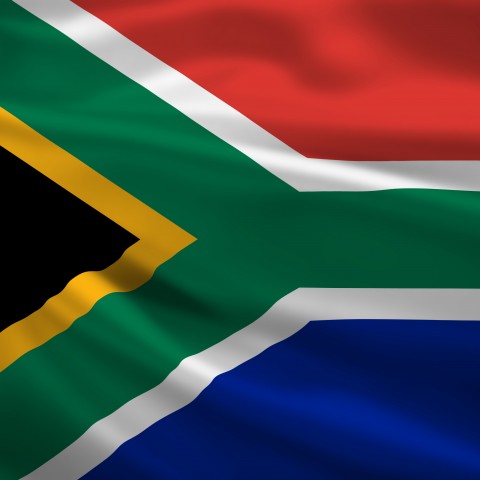
Die Suid-Afrikaanse vlag. / “The South African flag.”
The symbols are visual, iconic, or verbal. They tend to represent long-held traditions and history, as well as the beliefs and hopes of the country’s people.
Common national symbols include:
- a country’s flag or banner,
- a coat of arms,
- a stamp or seal,
- national colors,
- a head of state (in a monarchy), and so forth.
Some countries also have national emblems such as flowers and animals. For instance, the rose is the American flora emblem, while the beautiful protea is South Africa’s. The country’s national animal is the springbok (literally: “spring buck”); our national rugby team, called the Springbokke (“Springbucks)” is named after this emblem and wear it on their rugby jerseys.
National symbols are either officially recognized by a country’s government, or they’re unofficially accepted as such through popular use. This is especially so in the case of anthems.
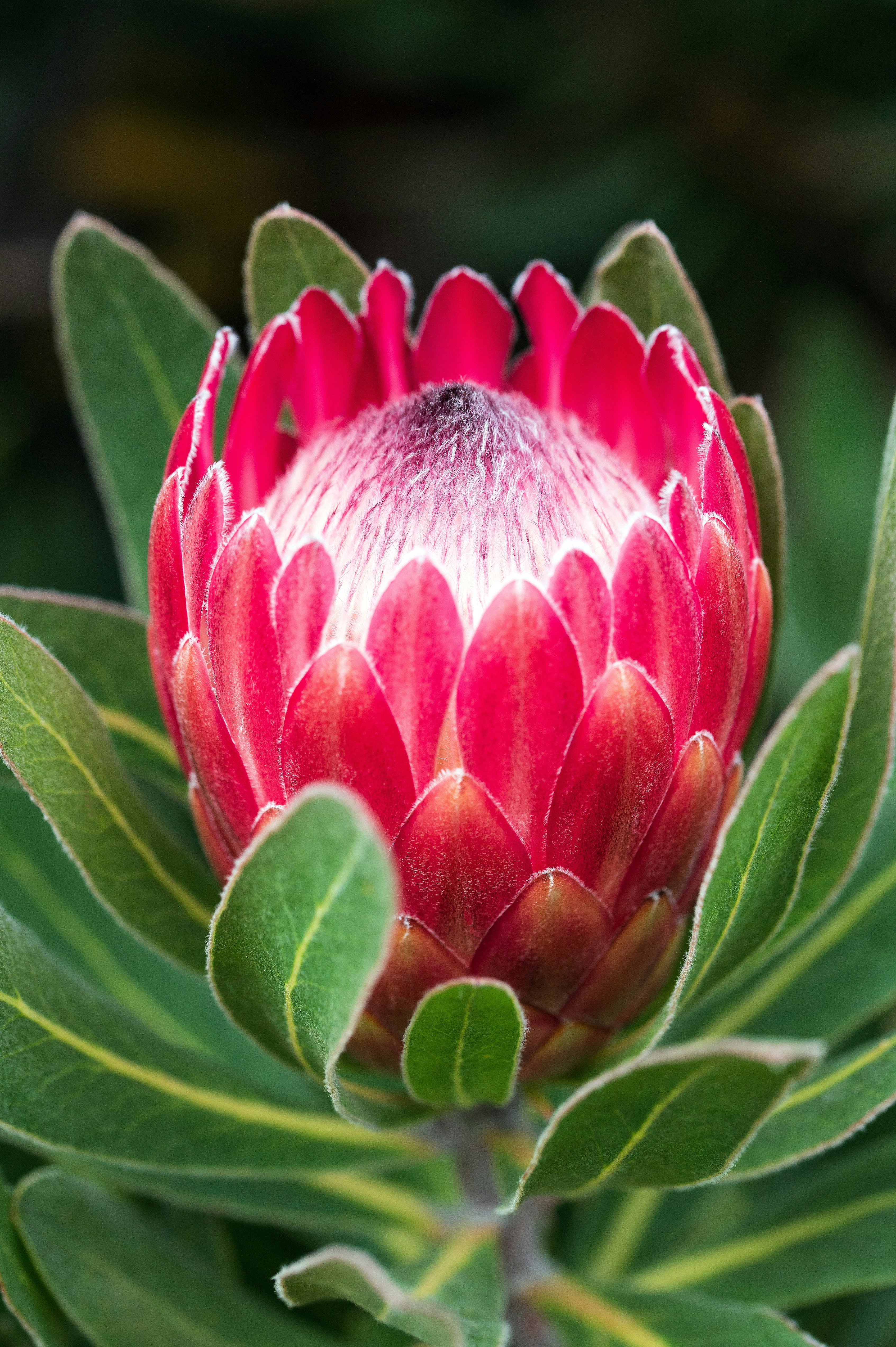
Die protea is ‘n nasionale Suid Afrikaanse flora embleem. / “The protea is South Africa’s national flora emblem.”
Anthems are probably the most powerful of all national symbols. Music is a conveyer of emotion and feeling, and the act of singing together can be extremely unifying. That’s why the lyrics of anthems tend to be deeply meaningful, as they represent the heart of every nation, so to speak.
Each country has its own etiquette or protocol when their national anthem is sung, mainly to show respect for what the song represents. For instance, in the USA, it’s custom to stand up straight, remove your hat, and place your right hand over your heart when singing the US anthem, the “Star-Spangled Banner”. If the country’s flag is also being raised, you’re expected to face it while singing the anthem.
The South African protocol is somewhat simpler. Only civilians have to take their hats off, but everyone should stand at attention (straight, with feet together and arms by the sides), and sing the anthem in a respectful manner.
4. Where/When is the South African Anthem Typically Sung?
As explained, anthems are national symbols, meaning they are musical representations of the patriotic values and ideals held by the people of a country. In South Africa, we sing or play our beautiful anthem in various contexts, such as:
- the opening of parliament;
- at diplomatic or PR receptions, such as when high-ranking government officials visit schools, etc.;
- at military ceremonies and events;
- during big sports events;
- at festivals celebrated on special national holidays;
- at some school openings after a weekend or holiday break.
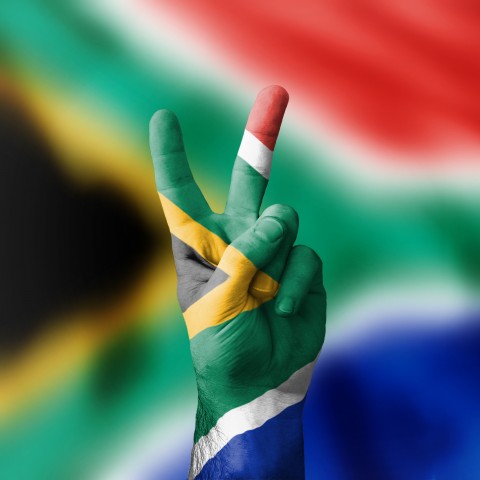
Die volkslied word altyd gesing tydens seremonies vir Vryheidsdagviering. / The anthem is always being sung at ceremonies held during Freedom Day celebrations.
Just as in many other countries, it is also sung at big sports events. For these, we often have a chorus leader or orchestra, usually of local talent. To be invited to lead the performance is obviously an extremely great honor.
Previously, it was sung as a matter of routine at government schools too, but only some schools still practice this custom.
5. BONUS: National Anthem Vocabulary and Phrases
Use the following vocabulary to talk about South Africa’s national anthem and its other symbols. Also, consider this easy guide to understanding Afrikaans grammar.
| Afrikaans | English |
| volkslied | anthem (n) |
| nasionaal | national (n) |
| vlag | flag (n) |
| staan op aandag | stand at attention |
| erfenis | heritage (n) |
| nasionaliteit | nationalism (n) |
| trots | pride (adj) |
| eer | honor (n) |
| eer(biedig) | to honor (v) |
| seremonie | ceremony (n) |
| seremonieel | ceremonial (adj) |
| ritueel | ritual (n) |
| parade | parade (n) |
| paradeer | to parade (v) |
| weermag | military (n) |
| saluut | salute (n) |
| saluteer | to salute (v) |
| patriot | patriot (n) |
| patrioties | patriotic (adj) |
| simbool | symbol (n) |
| kultuur | culture (n) |
| kultureel | cultural (adj) |
| geskiedenis | history (n) |
| tradisie | tradition (n) |
| land | country (n) |
| nasie | nation (n) |
| mars | march (n) |
| gesang | hymn (n) |
| komposisie | composition (n) |
| lirieke | lyrics (n) |
| bladmusiek | sheet music (n) |
| opvoering | performance (n) |
| orkes | orchestra (n) |
| koperblaasorkes | brass band (n) |
| offisieel | official (n) |
| statig | stately (adj) |
| respek | respect (n) |
6. AfrikaansPod101 Can Help You Learn the South African National Anthem
…and so much more!!
At AfrikaansPod101.com, we can help you understand Afrikaans easily with our fun and practical learning materials, such as recorded videos and free vocabulary lists. With our help, you’ll be able to use Afrikaans and even sing the Afrikaans part of the national anthem with ease!
Also, decipher Afrikaans songs and texts yourself by using the multiple tools we make available to you upon subscription, such as the Afrikaans Key Phrase List and the Afrikaans Core 100 Word List. And make sure to keep your Afrikaans online dictionary close by for easy translation!
Don’t wait—subscribe immediately!
About the author: Christa Davel is an experienced, bilingual (Afrikaans and English) freelance writer, content creator, and journalist, and is currently based in Cape Town, South Africa.












